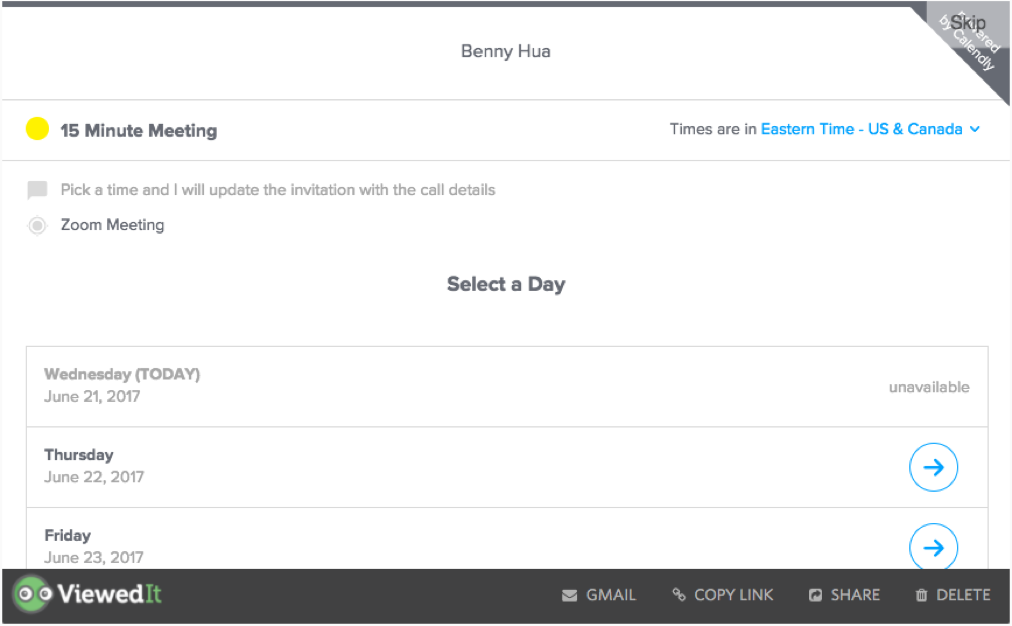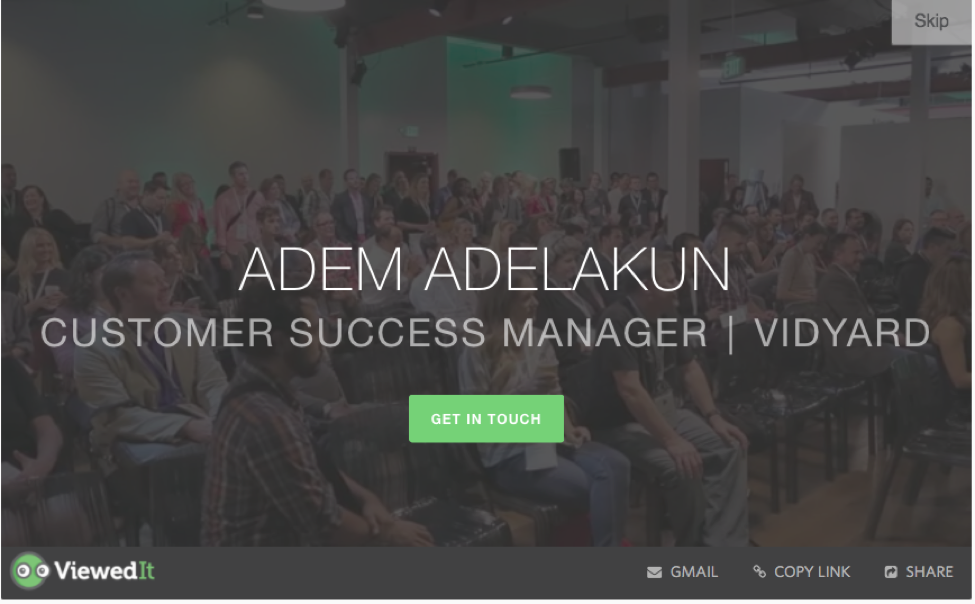Using video in email outreach is something that we’ve seen a lot of success with. Whether you’re in sales trying to book more meetings, in marketing communications trying to convey your message, or even in higher education trying to connect with your students, people enjoy something that has been crafted and personalized for them. However, the battle doesn’t end with getting people to click play! Making the content meaningful and engaging is what really brings your message across and helps ensures you get a satisfying 100% watched notification.
But how do you do that? Let’s start with an example and break down what works:
The Hook
Whether it’s a pop song or a sales video, you have to have a hook to get people engaged. The best way to do this with video is to introduce yourself, tell them why you are reaching out, and what about them made you want to reach out in particular. For example, in the video above, I mentioned their title and some of their responsibilities that I found on LinkedIn. If you are going for a more account based approach, you can mention a piece of news like a successful funding round. Showing you researched shows you care!
Your Attitude
Like my eighth grade teacher told me, any good presentation requires a positive attitude. This is easy to show in video format, as relaxed, open body language, facial expressions, and hand motions make for a better experience than rigidity. Protip: Speak with a smile, it goes a long way.
Showing Value
A question you should always ask yourself before filming a video for someone is: “Why?” – as in, “Why should this person want to start a conversation with you?”, “Why are you reaching out to them?”, or “Why should they keep watching?” In a limited amount of time, you need to touch on where your solution could fit into their initiatives or solve their pain points. In the video above, I mentioned speeding up the sales cycle, booking more meetings, and reengaging with cold contacts as being of interest to many sales leaders. Again, research is key!
Calls-to-Action
There are two calls-to-action that you should consider placing at the end of your video.
Verbal calls-to-action are centered around what you’re looking to gain from the person you have sent the video to. Are you looking to learn more about their business, to schedule a demo, or just introduce yourself? Make your intentions known at the end of the video so that your contact understands what next steps would be.
Visual calls-to-action determine what happens when your video is finished. Depending on your expectations with the contact, a variety of events can play once the video ends in order to streamline the communications process. For example having another video, like a microdemo or Chalk Talk play right after is a good way to give more information to your prospect. Having a scheduling event, like Calendly, works wonders when trying to book meetings:
And a newsletter/event signup can bring key individuals to your tradeshows and booths with greater efficiency.
Our team has tried numerous techniques with our video voicemails, and have come to the conclusion that with these four steps, any team can start engaging better with video! If you’d like to start succeeding with your own video voicemails, download Viewedit today.
The post 4 Tips for Creating A Killer Video Voicemail appeared first on Vidyard.
source http://www.vidyard.com/blog/4-tips-creating-killer-video-voicemail/



No comments:
Post a Comment